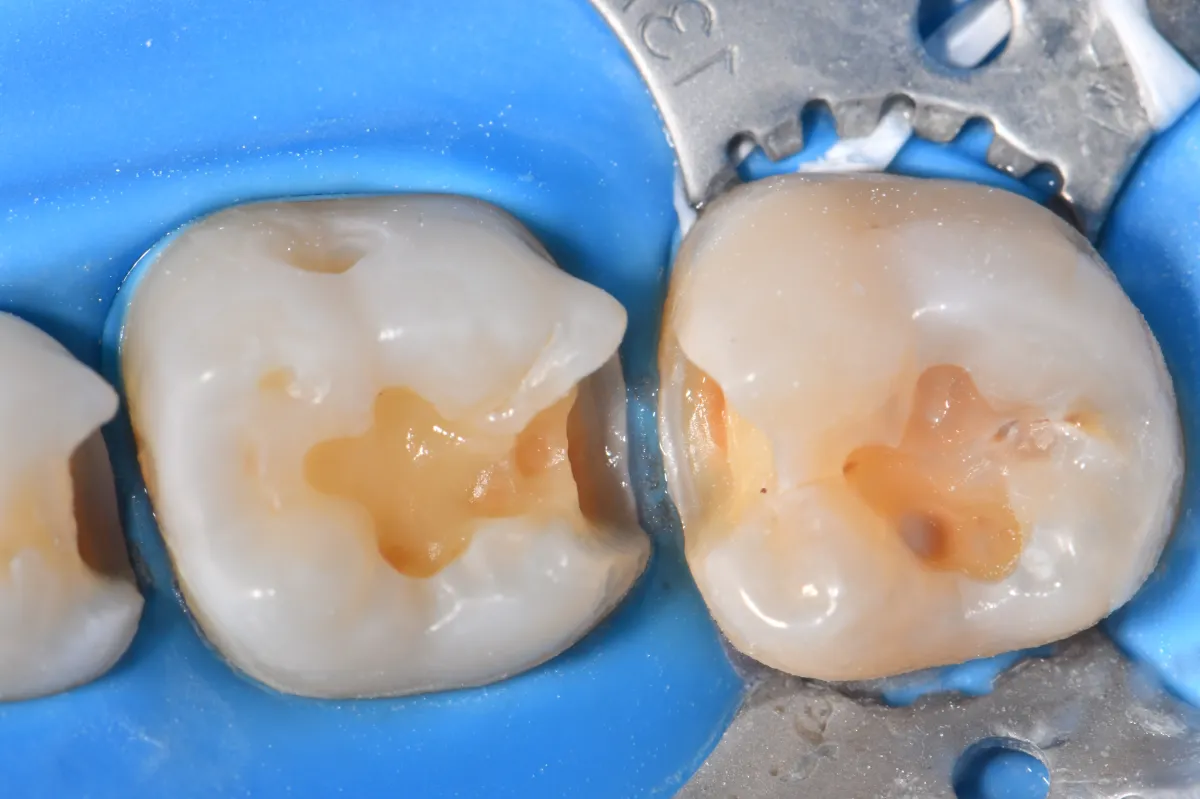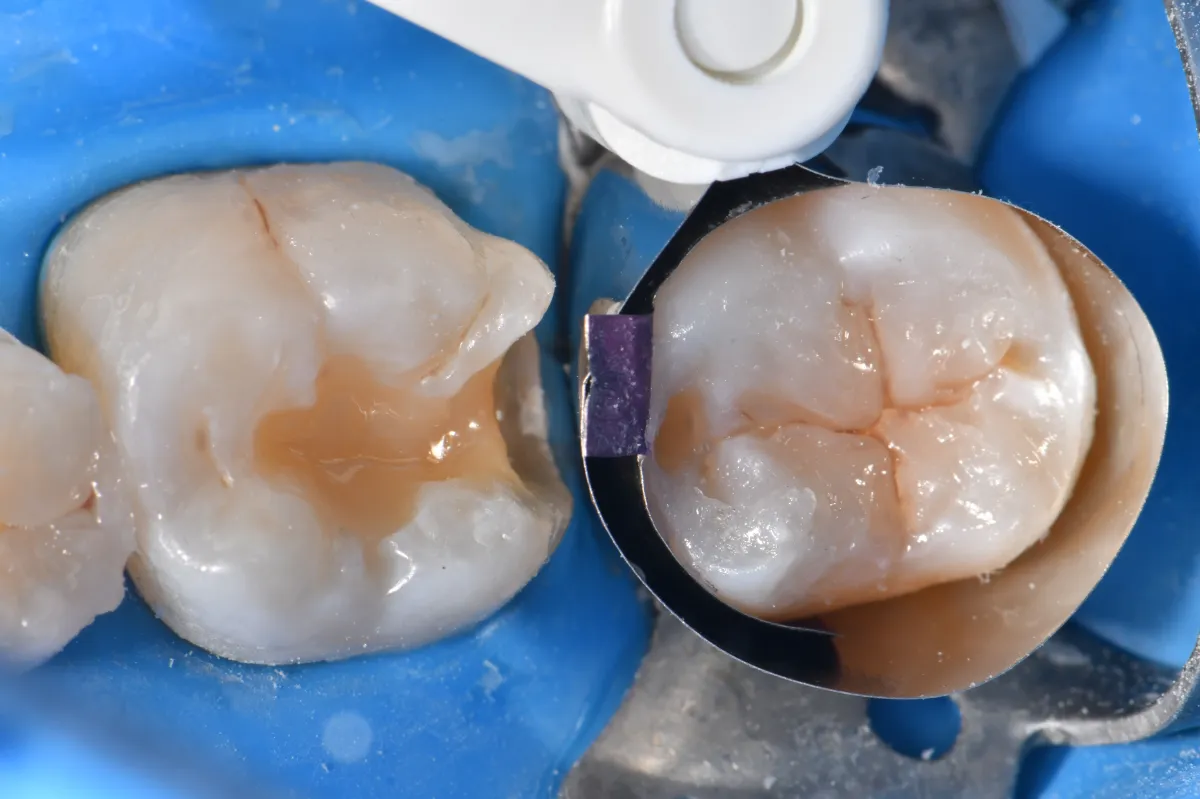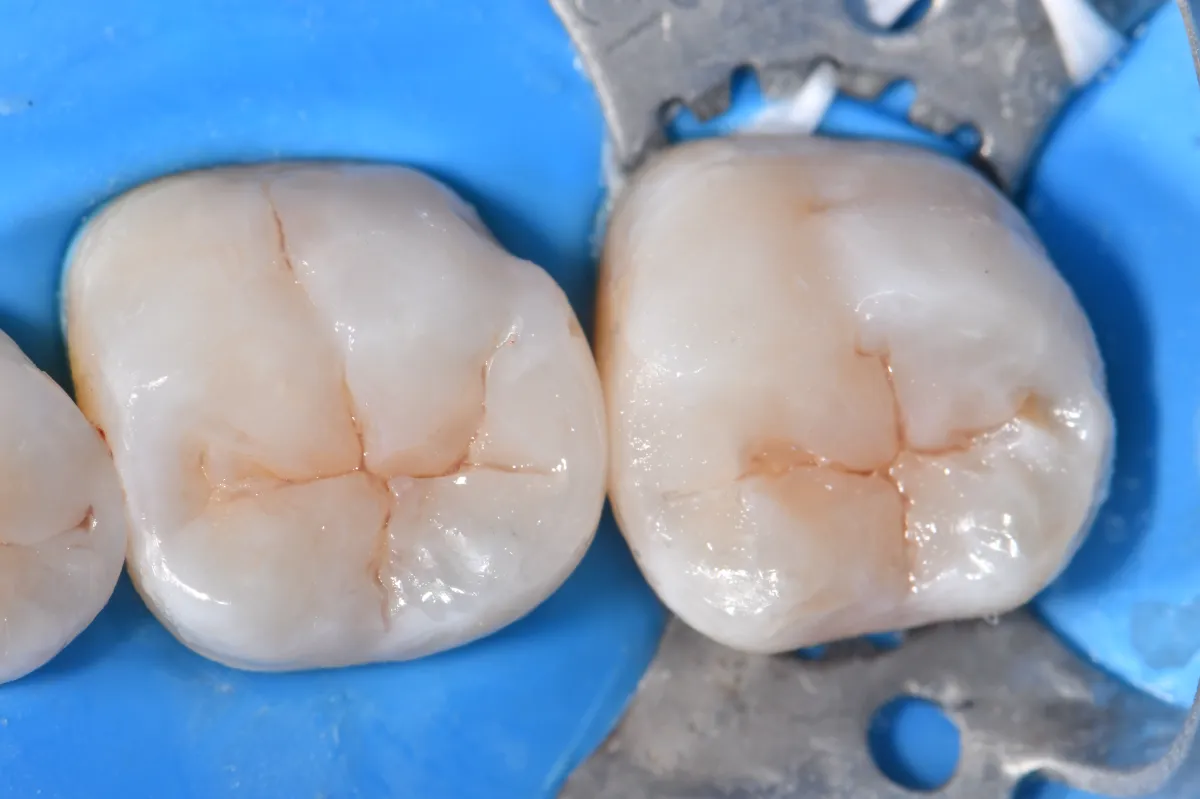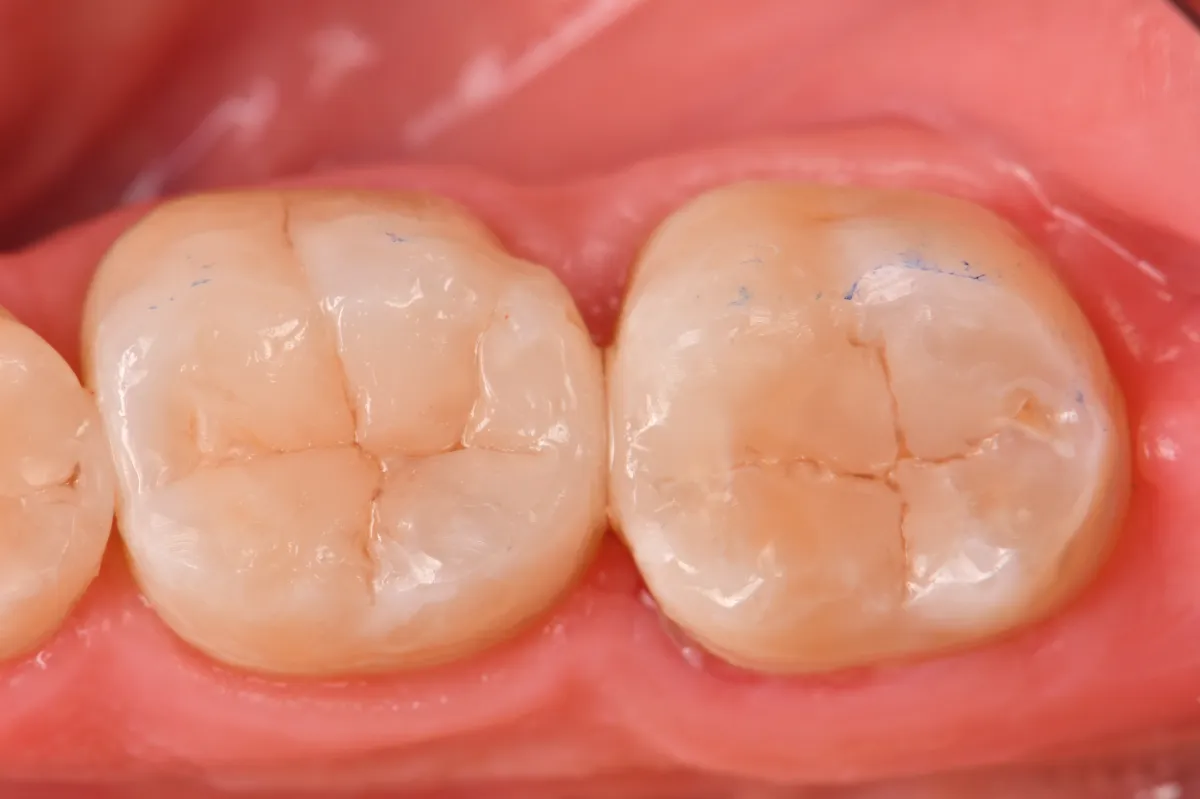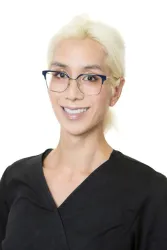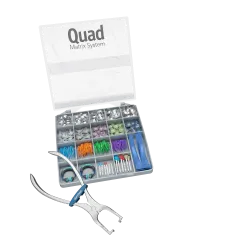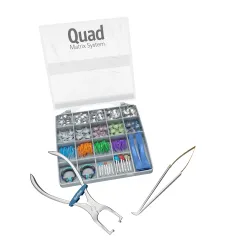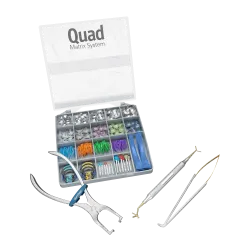A healthy 34 year old male with a 5+ year history of energy drink consumption presented to the practice for restoration of dentin caries on teeth #18MO, 19DOB and 20DO. On radiographic examination the raw findings were: caries: #20M2D3, 19D3, 18M3 with an open buccal pit requiring restoration on tooth #19B. There was no history of pulpitis with the affected teeth in this quadrant.
Background
Procedure
The patient was anesthetized using 2 carpules of 2% Lignocaine with 1:100,000 epinephrine via an inferior alveolar nerve block and supplemental long buccal nerve block. A rubber dam was placed (1. Dermadam, Ultradent Products) prior to preparation of teeth #20DO, 19DOB and 18MO. Caries was excavated using ceramic rosebud burs (2. Ceraburs, Komet) to the level of hard, affected dentin.
The margins were bevelled prior to adhesive substrate optimization using a micro particle abrasion system and 29 micron aluminum oxide (Aquacare). The bicuspid was restored first by affixing the Garrison Quad Matrix system (3. Garrison Quad Ring) with bifid wedge system which ensures an exceptionally hermetic and tight marginal seal of the assembly against the cavosurface margins of the preparation.
The enamel was etched for 10 seconds before a 12 second etch onto dentin surfaces followed by a thorough water rinse. A 2% chlorhexidine solution (Vista) was scrubbed into all surfaces for 30 seconds in order to disinfect, deactivate matrix metalloproteinase activity as well as rewet the preparation in a single step. The surface was reduced to a moist dentin consistency prior to application of the 5th generation total etch adhesive (Peak Universal Bond, Ultradent Products). The restoration was microlayered for the first 5 minutes taking care not to link enamel and dentin to allow for maturation of the newly formed hybrid layer prior to the reconstruction of the marginal ridge, essentially converting a Class II situation into a Class I restoration. The occlusal was microlayered in a similar fashion (A2 Clearfil Majesty Flow, Kuraray Noritake Dental) prior to occlusal lobe-by-lobe layering using A3 Grandio SO Unlimited in a fashion compatible with a reduced C-Factor strategy.
Tooth #18MO was completed separate to #19DOB as the author prefers to complete back to back Class II restorations separately in an effort to idealize spacing and optimize marginal finish. Simultaneously, access to the facial aspect of #19 meant that this buccal restoration could be completed simultaneous with #18. Following this, a matrix-in-matrix approach was utilized with a Garrison Firm Band situated internal to a circumferential matrix (4. Omnimatrix, Ultradent Products). The preparation was restored in a similar fashion to #20DO and completed prior to affixing the Garrison Quad Matrix system for restoration of #19DOB (5.).
The rubber dam was removed and the restorations adjusted to be conformative to occlusion before final finishing and polishing (6. A.S.A.P. Diamond Brushes, Clinicians Choice).
Considerations
The marginal ridge was both microlayered in the initial phases and layered in later stages in a horizontal fashion based on the findings of Nikolaenko et al (1) as horizontal layers resulted in higher bond strengths than did vertical or oblique approaches. The Garrison Quad Matrix allows for optimized axial adaptation to a curved surface due to its bifurcated and curved nature which works hand in hand with the new tension ring.
Reference
1) Nikolaenko SA, Lohbauer U, Roggendorf M, Petschelt A, Dasch W, Frankenberger R. Influence of c-factor and layering technique on microtensile bond strength to dentin. Dent Mater. 2004 Jul;20(6):579-85.


